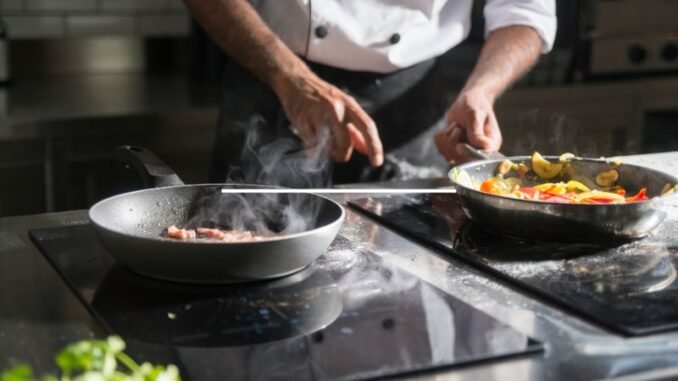
When it comes to running a restaurant, café, or bakery, your cooking equipment is the backbone of your operation. These machines do more than just cook food — they determine your consistency, speed, and even how much you can produce during busy hours. Choosing the right ones can make the difference between a smooth kitchen and constant breakdowns.
Why Cooking Equipment Matters
Every dish starts here. Whether it’s a sizzling plate of fried rice or a perfectly baked croissant, the quality and type of cooking equipment directly affect your results. Reliable equipment ensures consistent temperature, faster prep times, and better control — all essential when orders pile up.
Think of your kitchen as a production line. If one piece slows down or fails, the entire operation suffers. That’s why investing in good cooking equipment is less about luxury and more about long-term stability and food quality.
Core Types of Cooking Equipment
1. Ranges and Stoves
These are your everyday workhorses. A good range offers even heat and durability — essential for sautéing, boiling, or simmering.
- Gas Ranges: Preferred for control and instant heat adjustments.
- Electric Ranges: Easier to clean, better for smaller setups or where gas lines aren’t available.
- Induction Ranges: Energy-efficient and fast, great for modern kitchens or show cooking.
Pro Tip: Always match your range type to your kitchen ventilation and workflow.
2. Ovens
Not all ovens are created equal. Each type serves a unique purpose:
- Convection Ovens: Use fans to circulate hot air for even baking — perfect for pastries, cookies, and roasts.
- Combi Ovens: Combine steam and convection for versatility — ideal for restaurants offering a mix of baked, grilled, and steamed dishes.
- Deck Ovens: Common in bakeries and pizza outlets, known for heat retention and crusty finishes.
- Conveyor Ovens: Perfect for pizzerias, sandwich shops, and high-volume kitchens. Some conveyor oven cook steaks and chicken wings perfectly.
Pro Tip: For F&B businesses with varied menus, a combi oven offers unmatched flexibility.
3. Fryers
From golden fries to crispy chicken, fryers handle high-volume frying efficiently.
- Countertop Fryers: Great for small kitchens or limited menus, and if you have an island-type outlet in locations like malls, hospitals, etc.
- Open Fryers: Great for floating items such as nuggets, fries, and bone-less proteins
- Pressure Fryers: Gives bone-in chickens like drumsticks and thighs crispiness on the outside and juicy on the inside
- Oil Filtration Systems: Extend oil life, removes impurities, and improve food quality — a worthwhile investment over time.
Pro Tip: Regular cleaning and oil maintenance directly impact taste and equipment lifespan.
4. Grills and Griddles
These bring flavor and texture to food — essential for burgers, steaks, or breakfast menus.
- Charbroilers: Especially important in kitchens that serve grilled meats, breakfast items, or fast casual dishes.
- Flat Griddles: Great for eggs, pancakes, or sandwiches. Also great for teppanyakis, fried rice, and even burger patties.
- Infrared Grills: Heat faster and reduce flare-ups.
Pro Tip: Consider your menu before choosing between open flame or flat-top designs.
Planning Your Layout and Equipment Placement
When designing your kitchen, equipment placement affects both safety and workflow. For instance:
- Avoid placing display showcases directly under air conditioning units, as temperature fluctuations can affect performance.
- Keep high-heat equipment like fryers and grills away from refrigeration units.
- Always keep a proper room ventilation if equipment are placed in enclosed store rooms where temperature can be affected by multiple different equipment.
- Always consult your equipment supplier or kitchen planner when creating your layout — they can advise on spacing, power load, and ventilation needs.
Choosing the Right Supplier
The best suppliers don’t just sell — they guide you. A good supplier will:
- Help you calculate your kitchen’s production capacity.
- Advise on maintenance schedules.
- Provide training or after-sales service to your team.
Pro tip: Always buy from suppliers who offer service support and spare parts availability.
Final Thoughts
Cooking equipment is more than just a purchase — it’s an investment in your kitchen’s heartbeat. By choosing reliable brands, planning your layout carefully, and maintaining your tools, you set your F&B business up for consistency, safety, and long-term success.
Leave a Reply